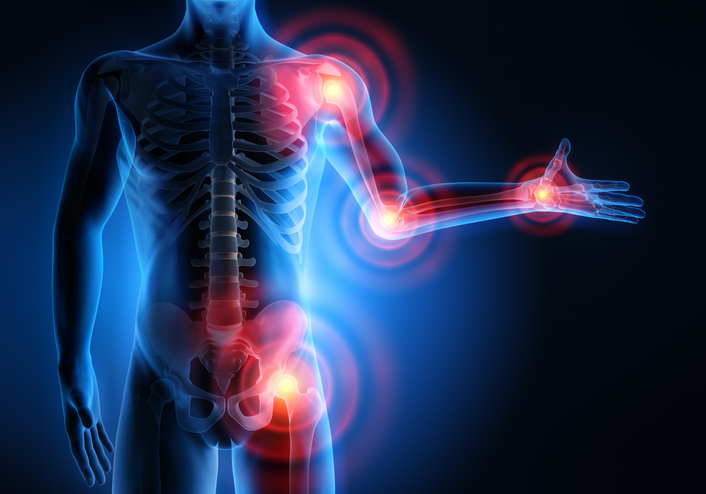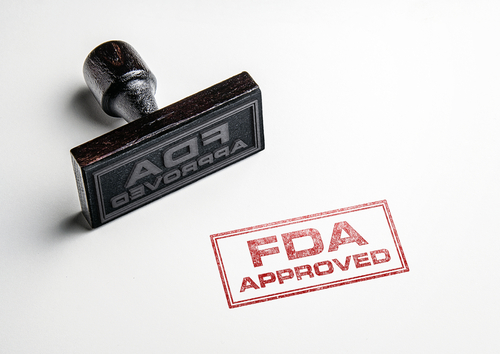
A new study assessed risk factors associated with worse pain and functional outcomes in rheumatoid arthritis (RA) patients who underwent total hip arthroplasty (THA) or total knee arthroplasty (TKA) one year postoperatively.
“The majority of patients undergoing THA and TKA are on biologics, methotrexate, or other [disease-modifying antirheumatic drugs] DMARDs, yet disease activity at the time of surgery remains high,” the researchers reported in Arthritis Care & Research. They added, “It is not known whether post-operative flares, or high disease activity affect 1 year surgical outcomes. The purpose of this study is to describe the relationship of peri-operative disease activity and flares of RA with pain and function scores one year after THA/TKA.”
The study included RA patients aged 18 years or older undergoing THA or TKA at a single center. The first 120 patients enrolled in the study were selected preoperatively either on the index surgery date or at the preoperative visit. Additional patients were selected based on the presence of with positive anti-citrullinated peptide antibodies (ACPA). Eligible patients either met the classification criteria for RA per the American College of Rheumatology (ACR)/European League Against Rheumatism 2010 or 1987 criteria or had their disease confirmed by the principal investigator. Researchers collected Hip and Knee Osteoarthritis/disability and injury Outcome Scores (HOOS/KOOS) and MD assessments of disease characteristics and activity (DAS-28, CDAI) preoperatively. Patient-reported outcomes (PROs) were collected preoperatively and one year after surgery. The RA Flare Questionnaire was used to identify postoperative flares weekly for six weeks; flares were defined as the concordance between patient report plus MD assessment. Baseline characteristics and HOOS/KOOS scores were compared with two‐sample t‐test/Wilcoxon rank‐sum and Chi‐squared/Fisher’s exact tests, and multivariate linear and logistic regression was implemented to identify any correlation between baseline characteristics, disease activity, and flares with one-year postoperative outcomes.
Of 315 patients who initially agreed to participate, 129 were lost to follow-up and 64 did not have one-year data available at the time of the analysis, so one-year data were available for 122 patients (85% were female): 56 THA patients and 66 TKA patients. Baseline characteristics and disease activities did not largely differ between patients who were and were not included in the study. However, patients who were included were younger (61.50 years vs. 64.47 years) and more likely to be white (80% vs. 56%) and had higher RADAI (9.82 vs. 5.98) and lower MD Global score (4.23 vs. 4.68).
Among the patients who were included in the study, baseline characteristics and disease activities did not significantly differ between THA and TKA patients, but TKA patients were more likely to meet ACR RA criteria than THA patients (89% vs. 72%) and more likely to be treated with biologics (59% vs. 39%).
Overall, 117 patients reported their flare status; more than half (n = 68, 58.1%) experienced a flare within six weeks of surgery, and of these patients, 37 (54.41%) had flare at baseline. Patients with flares were more likely to be on biologics and glucocorticoids, but methotrexate use did not differ between groups. Patients with flares, compared to those without, had higher baseline disease activity including DAS-28 ESR (3.88 vs. 3.07) and significantly worse HOOS/KOOS scores for pain and function. Absolute changes in HOOS/KOOS pain and function from baseline to one year did not largely differ regardless of flare status, with both cohorts exhibiting significant improvements. A significant negative correlation was observed between baseline DAS28 and one-year HOOS/KOOS function, suggesting that patients with lower disease activity had better pain and function. Functional outcomes did not largely differ between patients who did and did not report postoperative flares. In univariate analyses, white race, body mass index [BMI], flare, DAS28, and baseline HOOS/KOOS pain and function were predictive of one-year HOOS/KOOS pain; in multivariate analyses, when adjusting for clinical characteristics, DAS28 and BMI remained predictive of one-year HOOS/KOOS pain and function.
The researchers concluded, “In summary, we found that increased DAS28 and BMI, but not perioperative flares, increase the risk for worse pain and function one year after surgery. Given both of these features are modifiable, and the majority of patients with RA have moderate to high disease activity at the time of arthroplasty, future efforts are needed to determine whether pre-arthroplasty medical management should include efforts to control disease activity and weight, and whether these interventions might improve long term pain and function.”







 © 2025 Mashup Media, LLC, a Formedics Property. All Rights Reserved.
© 2025 Mashup Media, LLC, a Formedics Property. All Rights Reserved.